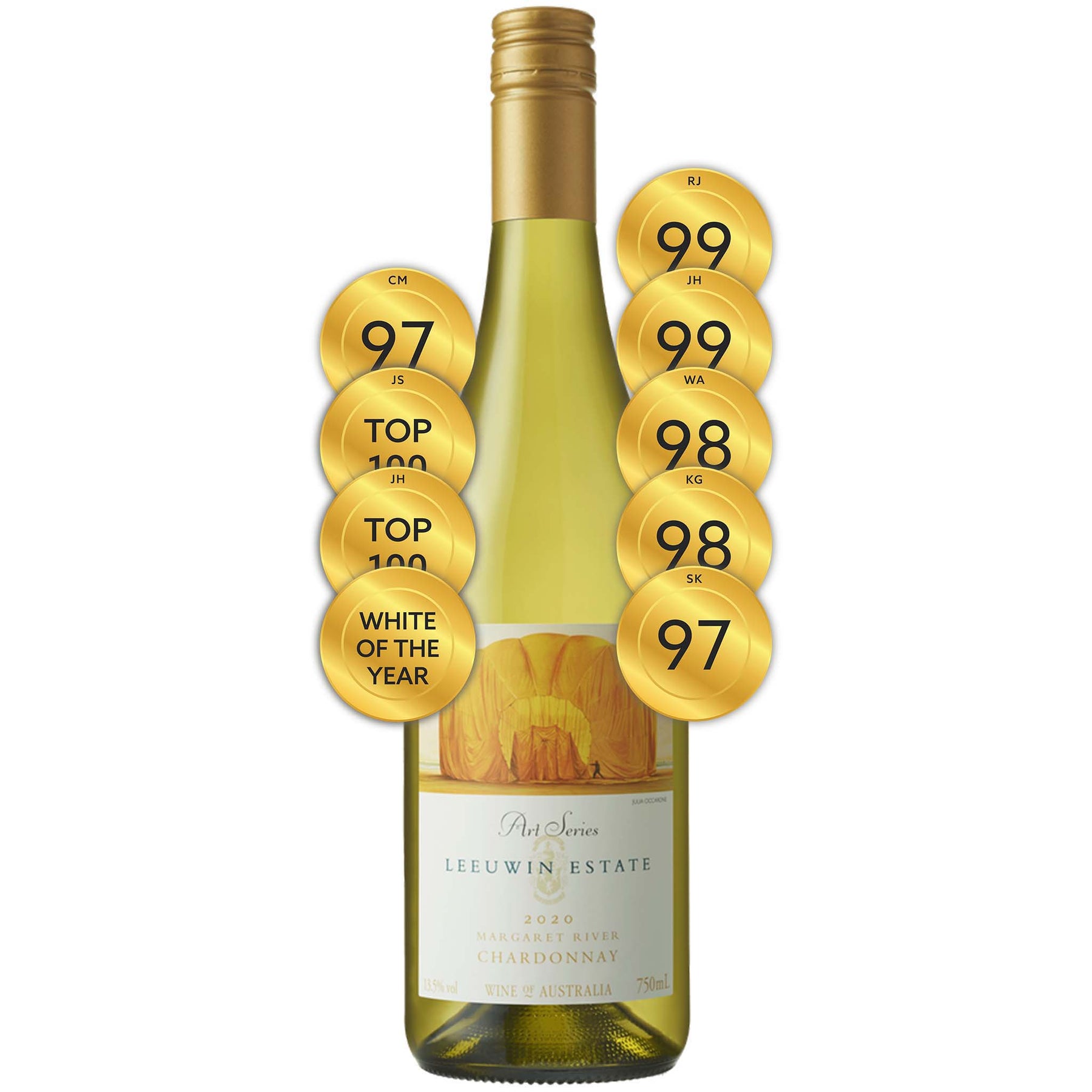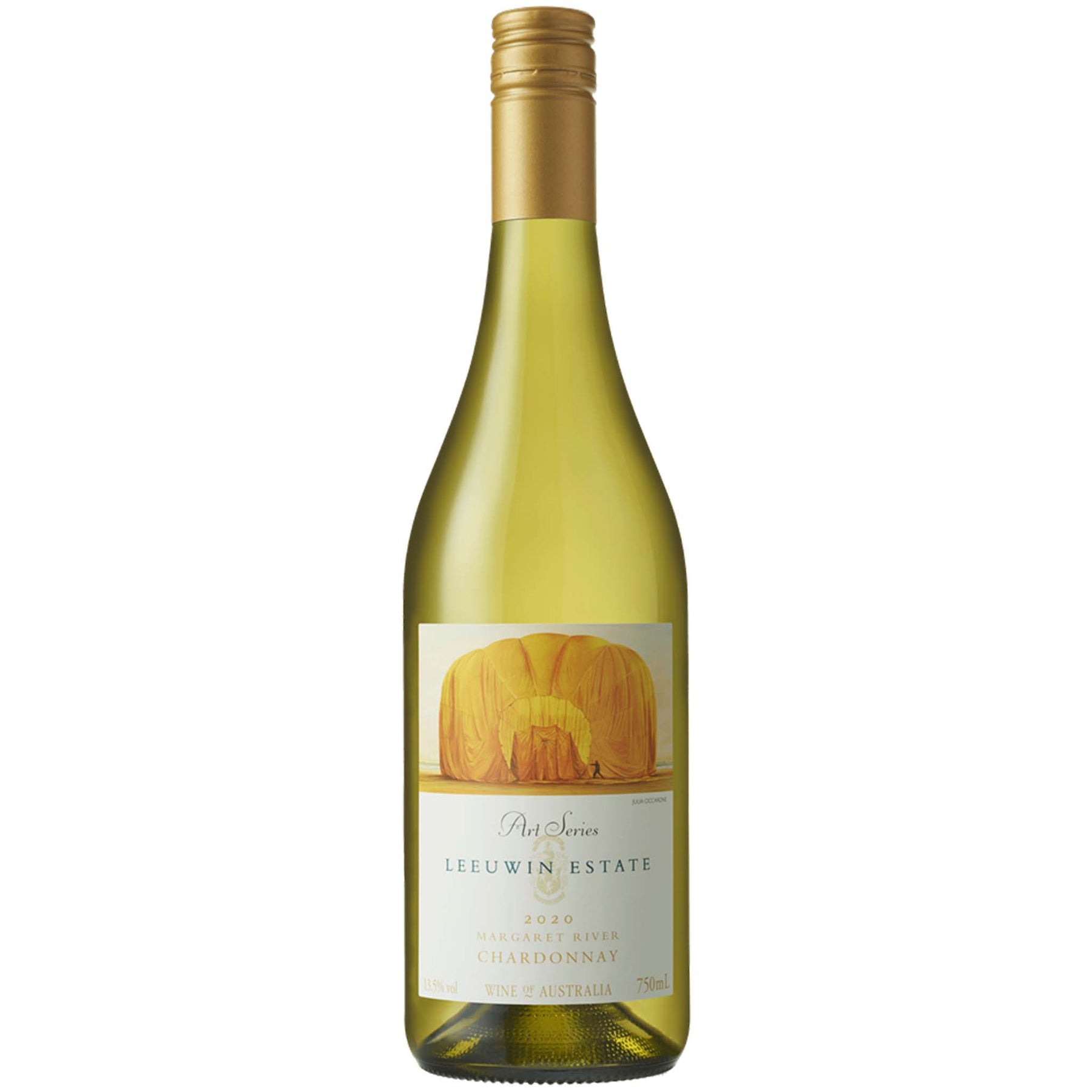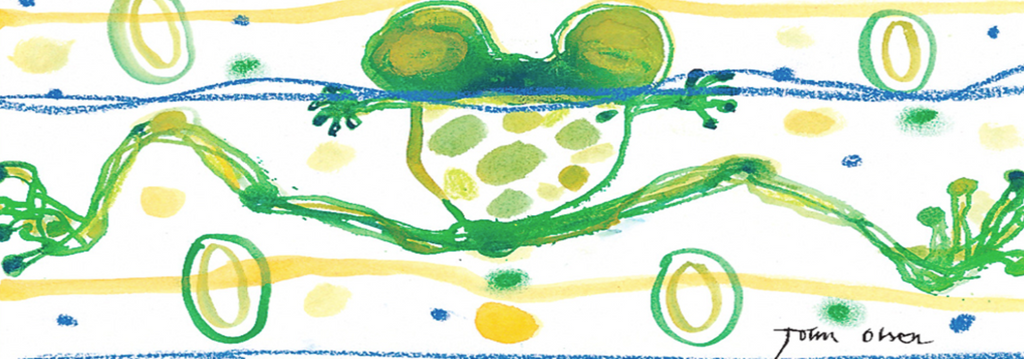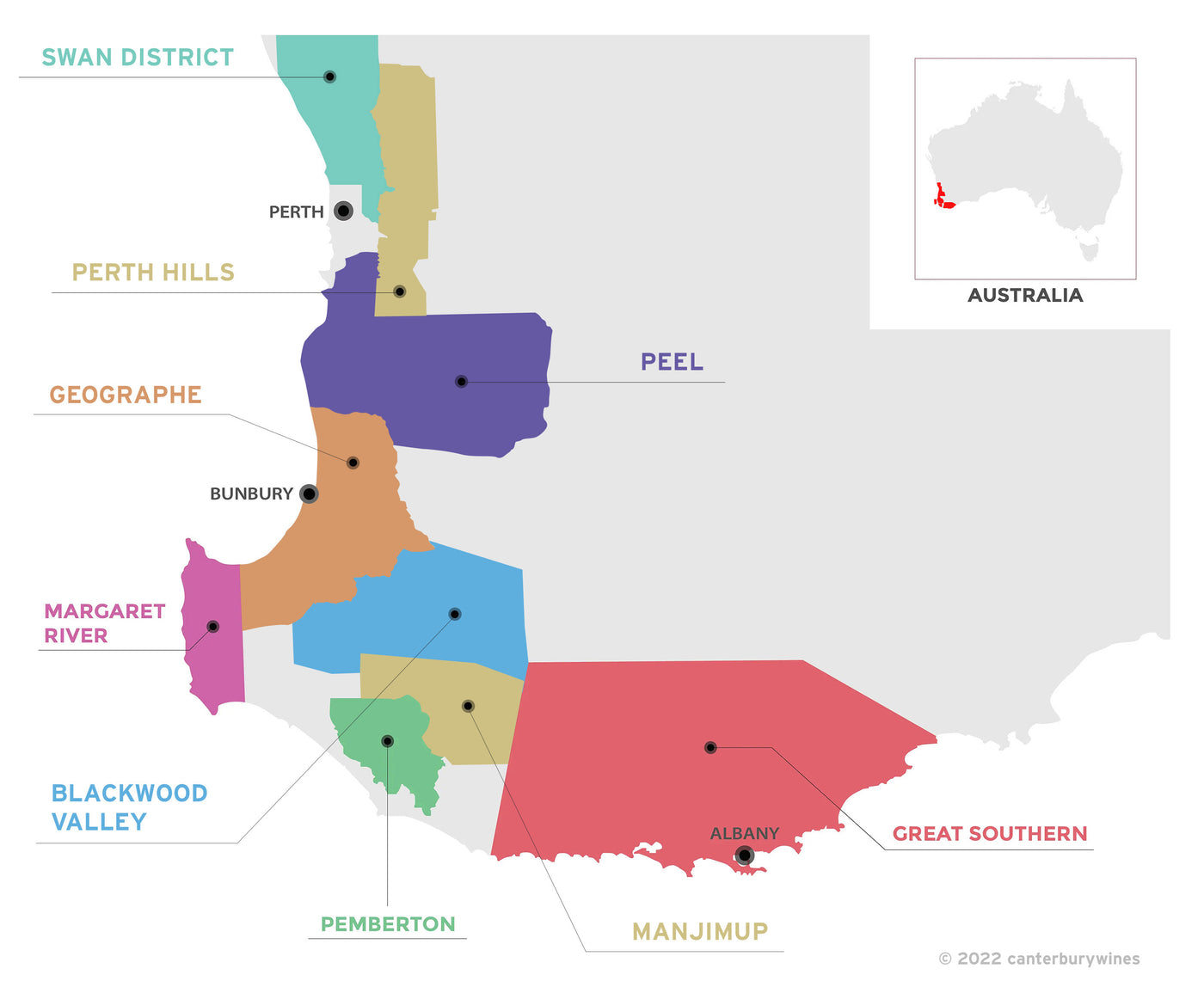

Leeuwin Estate Art Series Chardonnay 2020
Style: White Wine
Closure: Screwcap
Leeuwin Estate Art Series Chardonnay 2020
Warehouse
34 Redland Drive
Vermont VIC 3133
Australia
Critic Score: 99
Alcohol: 13.5%
Size: 750 ml
Drink by: 2040
Ray Jordan White Wine of the Year 2024
James Suckling Top 100 Wines of Australia 2023
James Halliday Top 100 Wines of 2023
"I’ve gone on record more times than I care to count saying the Leeuwin Art Series is Australia’s greatest chardonnay." James Halliday
Leeuwin Estate Art Series Chardonnay needs no introduction. It is an icon of Australian wine and is one of Langton's Heritage Five which celebrates Australia's most exceptional and ground-breaking wines - the other four being Penfolds Grange, Henschke Hill of Grace, Mount Mary Quintet and Wendouree Shiraz. It is often compared favourably with great White Burgundies.
"Always one of our very greatest Chardonnays – Grand Cru, all the way. Crafted in 100% top-notch new French oak, this latest release is considered by many to be as good as any ever made, and it is hard to disagree. Great intensity, and yet such is the balance that it seems almost imperceptible. Power, layering, elegance and extraordinary length. I gave it 98, but that seems a little cruel. It will drink beautifully for a decade or two and no doubt reach even higher levels." Ken Gargett
The Art Series Chardonnay is sourced primarily from the 1976-planted Block 20 and supplemented with fruit from the 1978-planted Block 22. The quality of the vineyard is well recognised and remains the backbone of the Art Series Chardonnay. The vineyard blocks are planted to the Gingin clone on a series of rolling hills facing all directions.
"Power and presence on the nose, then energy and vitality are the thread. Lemon curd, fresh nashi pear and lime create the shape and frame aromatically. Beneath, there are layers of vanilla pod, tea leaf, lemon myrtle and flint nuances. Heightened fragrance of frangipani and citrus blossom ensue. Neatly packaged and foiled are notes of patisserie, flint and nougat.
The palate is precise, focussed and fine with delicately woven texture through the mid-palate. Juicy white peach combines with pear at the core. Threaded within is harmony, elegance and vibrancy that pulls all elements together in a seamless line. A saline and mineral finish is the hallmark of this classic 2020 vintage." Leeuwin Estate
Expert reviews
"The perfect balance of this wine is central to its place at the top of the Margaret River chardonnay tree. The vintage saw little disease pressure, and the purity of the wine is absolute, white peach to the fore, sustained by perfect acidity. Drink by 2040." James Halliday, The Weekend Australian - 99 points and Top 100 Wines of 2023
"It would not surprise me if this was considered the greatest Leeuwin chardonnay yet. You would get no argument from me... there is elegance and power here. Subtle layered wine. It was a year of great concentration and power. Has pear and lime character that is part of the DNA. The fruit is generous, especially about the mid palate. Has a subtle and not overstated flinty character with a lift of spice. The oak is brilliantly managed and complementary. It's very tight and precise and the whole-bunch technique gives it that stalky, phenolics character. There's a savoury almond meal character on the finish. Incredible length and power here. The minerally character on the finish is quite pronounced. In the top three, certainly, of any Leeuwin chardonnay." Ray Jordan, Business News - 99 points and White Wine of the Year 2024
"Always one of our very greatest Chardonnays – Grand Cru, all the way. Crafted in 100% top-notch new French oak, this latest release is considered by many to be as good as any ever made, and it is hard to disagree. The wine is the palest yellow, with a nose immediately screaming complexity. Hazelnuts, stonefruits, florals, pears, matchsticks and spices, there is a fine minerally backing here, supporting the wine and maintaining intensity for the full, very long, journey. Integration of the oak is immaculate. Touches of the lime notes, typical in this wine, are evident, as is that more-ish salinity on the conclusion. Great intensity, and yet such is the balance that it seems almost imperceptible. Power, layering, elegance and extraordinary length. I gave it 98, but that seems a little cruel. It will drink beautifully for a decade or two and no doubt reach even higher levels. Drink: 2023-2043." Ken Gargett, Wine Pilot - 98 points
"The 2020 vintage in Margaret River was moderate to warm and will be forever remembered for the incredibly compacted harvest period, which started two weeks earlier than the 2019 harvest before it and was all wrapped up by Easter—that's largely unheard of. The 2020 Art Series Chardonnay leads with power and density, not unlike the 2018 before it. Tight and green in the glass, you get salted pear, white peach, nectarine, red apple skins, preserved citrus and crushed shell. The wine has minerality and tension within the confines of the opulent fruit. Staggering length, as usual. The winemaking remains relatively consistent across the years: hand-picked fruit from Block 20 and 22 (planted in 1976 and 1978, respectively). Thirty percent of the cuvée was whole bunch pressed to 100% new Burgundian oak, while the balance was destemmed, crushed and pressed to 100% new Bordelais oak. Sulfured post-ferment in order to discourage malolactic fermentation, both components remain in barrel for 11 months. Super wine. Drink: 2022 - 2047." Erin Larkin, Wine Advocate - 98 points
"It's a rare day, indeed, when one can say with conviction, that this is the best vintage yet of one of Australia's finest chardonnays. The 2020 Chardonnay is a subtle white that builds in the glass, is delightfully floral, complex, fine and powerful. with generosity of fruit and timeless length. Will it age? The 1982, at the same tasting, is still profound and memorable. Great team in the vineyard and winery: diligent family behind the scenes." Peter Forrestal, Money Matters Magazine
"Pale lemon yellow. White nectarine, sea spray, roast hazelnut, and crushed sage aromatics. Palate fills with an intensity and power that makes you immediately sit up and focus. There's a ripeness of fruit but with the saline minerality, touch of struck flint and layers upon layers of delicate oak spices it never stops offering more facets of its brilliance. Line, length and drive all harmonise to the never-ending finish. Drink: 2023–2038." Stuart Knox, The Real Review - 97 points
"This is a peach of a wine. One sip and wow, you’re into its wonderful world. It has one foot entirely in the elegant camp, and the other comprehensively in the domain of power. It’s seamless. There are peach, cedarwood, white flower, ginger and custard-like characters, along with quartz, though it’s all just rolled and reamed into one. The length of it; it’s brilliant. The off-hand confidence. This is a super release. Drink: 2025 - 2035+." Campbell Mattinson, The Wine Front - 97 points
"Tauter than vintages of yore, boasting complex aromas of pear distillate, citrus verbena, nougat, cashew, cedar-tinged oak and succulent white peach. Immaculately constructed, pure and rather wonderful. Founded on a tensile stream of pungent mineral, transcendental poise and scintillating length. There is little out of place here. Superb New World chardonnay. Drink or hold. Screw cap." Ned Goodwin MW, JamesSuckling.com - 97 points and Top 100 Wines of Australia 2023
"A wine that tells the story of chardonnay's evolution in Margaret River and remains at the top of its game because it's a pure expression of place as much as the producer. It’s refreshing, classy and superfine, the acidity reining everything in and towards an outrageously long finish. Mesmerising. Drink by 2032." Jane Faulkner, Halliday Wine Companion - 97 points
Awards
Ray Jordan White Wine of the Year 2024
James Suckling Top 100 Wines of Australia 2023
James Halliday Top 100 Wines of 2023
The winery

In 1969, Denis and Tricia Horgan purchased a farm and plumbing business in Margaret River that they would eventually transform into Leeuwin Estate, one of Australia's most iconic wineries. At the time they had little interest in wine or plumbing (they sold the business), but in 1972 they met legendary Napa Valley winemaker, Robert Mondavi, who wanted to purchase their farm to plant vineyards. The farm was not for sale, but with Mondavi acting as consultant and mentor, they planted vineyards with the dream of becoming a world-class producer of premium wine.
A nursery was planted in 1974, the vineyards were planted over a five-year period from 1975 and Leeuwin released its first commercial vintage in 1979. The Leeuwin Estate vineyards are planted to Chardonnay, Cabernet Sauvignon, Riesling, Sauvignon Blanc and Shiraz, but it is the Chardonnay and to a lesser extent the Cabernet that are the stars of the portfolio. Langton's classifies Leeuwin Estate Art Series Chardonnay as 'Exceptional' and one of the Heritage Five which celebrates Australia's most iconic, exceptional and ground-breaking wines - the other four are Penfolds Grange, Henschke Hill of Grace, Mount Mary Quintet and Wendouree Shiraz.
Leeuwin Estate releases its wines under three labels, the Art Series, Prelude Vineyards and Siblings. The Art Series range was created in 1980 and features Australian artwork on the labels.
Denis and Tricia Horgan continue their involvement in Leeuwin Estate, but today it is their two eldest children, son Justin Horgan and daughter Simone Furlong, who run the business as joint chief executives.
"I fell into the wine industry because Mondavi wanted to buy the land; I thank God that we didn't sell." Denis Horgan

Art series labels

The Art Series range was created in 1980 and features Australian artwork on the labels.
"I had developed an interest in Australian art in the early days. During a trip to Europe I was invited to meet Baroness Philippine de Rothschild at the Chateau Mouton-Rothschild wine estate in Bordeaux. The winemaker showed me around the winery and art gallery before having lunch with the Baroness.
I was so impressed with the way art had been integrated into the business that I asked Baroness Philippine if she would mind if we used Australian Artwork on our labels. She thought that was a great idea and said, "Go ahead".
So we created the 'Art Series' range in 1980 to define our most opulent and age-worthy wines from each vintage. The first label carried a painting of our region's famous 'Caves Road' by Robert Juniper. We now have over 150 paintings from Australia's leading contemporary artists in our collection. We display the original artworks in the winery art gallery." Denis Horgan
The collection now comprises over 150 paintings and features artworks from artists including John Olsen, Arthur Boyd, Sir Sidney Nolan, Lloyd Rees, Albert Tucker, Fred Williams, Robert Juniper, Clifton Pugh and Imants Tillers. The only work not part of the Estate's own collection is Sir Arthur Streeton's Golden Summer, which was kindly offered by its then owner for use on a special Museum Release of the 1987 Art Series Cabernet Sauvignon before moving to its new home at the National Gallery.
Many of the paintings and sculptures were specifically commissioned. Others were discovered in exhibitions around Australia and the artists approached for copyright permission to be reproduced as part of the label series. The first painting commissioned was of Caves Road by Robert Juniper for the 1980 Art Series Chardonnay. John Olsen was approached to paint the first artwork to be used on the Art Series Riesling. He responded with the creation of four works entitled “Frogs in Riesling”. These paintings were so irresistible that the decision was made to purchase all four and all have been used, in a random pattern, on Art Series Riesling labels ever since. This makes the Riesling unique, as for the labels of all other wines, a new work is commissioned each year.

Sir Sidney Nolan, when approached at the beginning of the series, advised he was not a graphic artist and did not paint for wine labels. He was also a red wine buff and was sent two unlabelled bottles of the 1982 Cabernet Sauvignon – one of Leeuwin's best vintages. He responded that for this wine he would happily provide a painting. This resulted in his Dolphin Rock appearing on the label.
With the high calibre of the artists consenting to appear on the labels, it is no longer a challenge convincing leading artists to be part of this collection. Eventually, as the collection builds, it is hoped to tour it in its own right. Some works have been lent from time to time but most are on display in the Leeuwin Estate Art Gallery.
The concerts

"As one of the world's most isolated wine regions, we wanted to be creative in generating reasons for visitors to come and discover Margaret River and our wines.
Our winery overlooks a meadow surrounded by a forest of tall karri trees, creating a beautiful natural amphitheatre. So in 1985 we wrote to the West Australian Symphony Orchestra, the local Ballet Company and the Opera Company inviting them to consider coming down and doing a concert. The idea of alfresco performances in the bush was extremely novel at the time and we didn't get much interest from any of them.
The then Director of The Festival of Perth, David Blenkinsopp, approached us about that time, asking if we would underwrite the visit to Australia of the London Philharmonic Orchestra, something that somewhat shocked us at the time, huge costs, logistics and all of that – no was the answer, unless they would be prepared to perform in our vineyard.
He went off to London to organise the tour and said he'd talk to the LPO and let me know. To my surprise he came back and said they'd love to perform at Leeuwin, as long as we underwrote the whole Australian tour. Trish thought I was mad, in fact everybody I know thought I was mad, but I said yes!
Funnily enough it was a bit like the wine, we didn't know that much about music and certainly nothing about being concert promoters, however we thought the London Philharmonic Orchestra was a pretty good 'band' to start our concerts with! They really might be worth the risk and we needed to generate a profile for our wine business in a creative way.
So 100+ members of The London Philharmonic Orchestra travelled all the way to Margaret River, we built a stage, did some creative things entertainment wise and all had a fantastic night. The concert was a sell-out; we even had to turn away 500. It made front page news, described as “The most extraordinary concert ever held in Australia."
Our wines were successfully launched nationally at functions held off the back of the concerts throughout Australia – it proved to be a highly successful promotion.
The impact of that first concert guaranteed the future success of our concerts. Whilst it cost a fortune in our underwriting of the total Australian tour it was a highly successful launch pad to promote Leeuwin Estate to all the right people at home and Eastern Australia.
That first Leeuwin Concert was so successful that we continued the relationship with the Festival of Perth for another two years, featuring other international orchestras. Then we thought that we needed to do something different and presented Ray Charles. The new format proved to be even more successful so we decided to stick to that format for a while – 32 years later we have presented an eclectic array of the world's leading musicians at Leeuwin, from Sting to James Taylor, Carole King and Dame Kiri Te Kanawa." Denis Horgan
Text taken from Milton Wordley's article 'People of Wine', https://winetenquestions.com.au/

Western Australia
Western Australia is home to more than 400 wineries across nine vast and extraordinary wine regions which are almost entirely concentrated in the south-west and great southern land divisions of the State. The regions are Blackwood Valley, Geographe, Great Southern, Peel, Pemberton, Manjimup, Margaret River and Swan District.
The oldest region is the Swan Valley, the best known both nationally and internationally is Margaret River and the largest is Great Southern. The Great Southern region is further divided into the five subregions of Albany, Denmark, Frankland River, Mount Barker and Porongurup.
The history of wine production in Western Australia dates back to 1840 with the establishment of Sandalford in the Swan Valley region. The recognition of the fine wine possibilities started to be realised after the establishment of the Margaret River Region in 1967, which has become renowned for its high quality Chardonnay and Cabernet Sauvignon. The other regions produce a diverse range of regionally distinct wines, from stunning Rieslings and evocative Shiraz, to a range of unique Cabernet Sauvignon blends.


